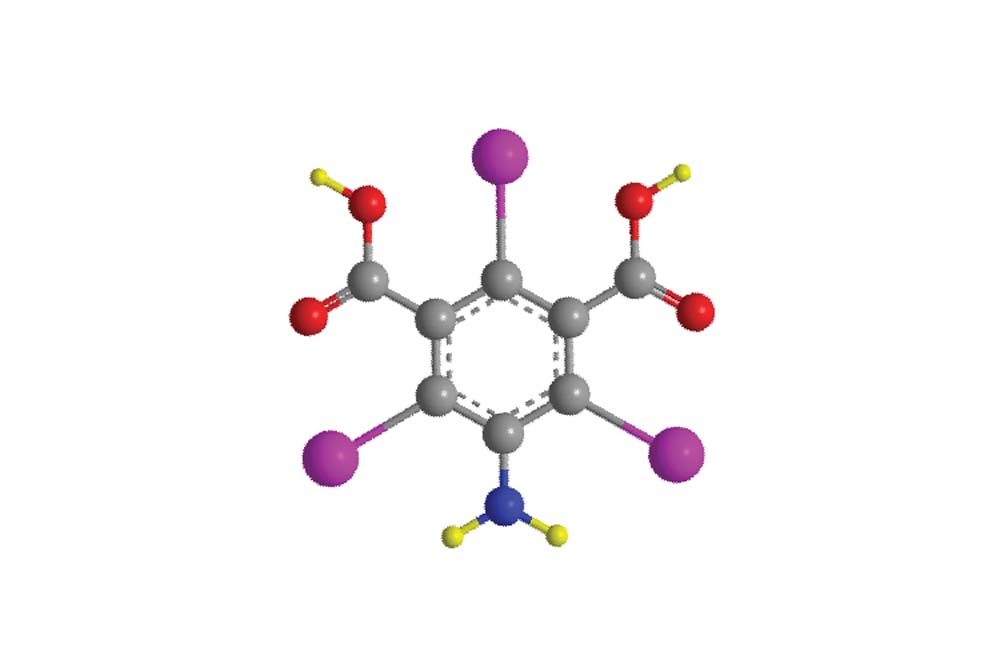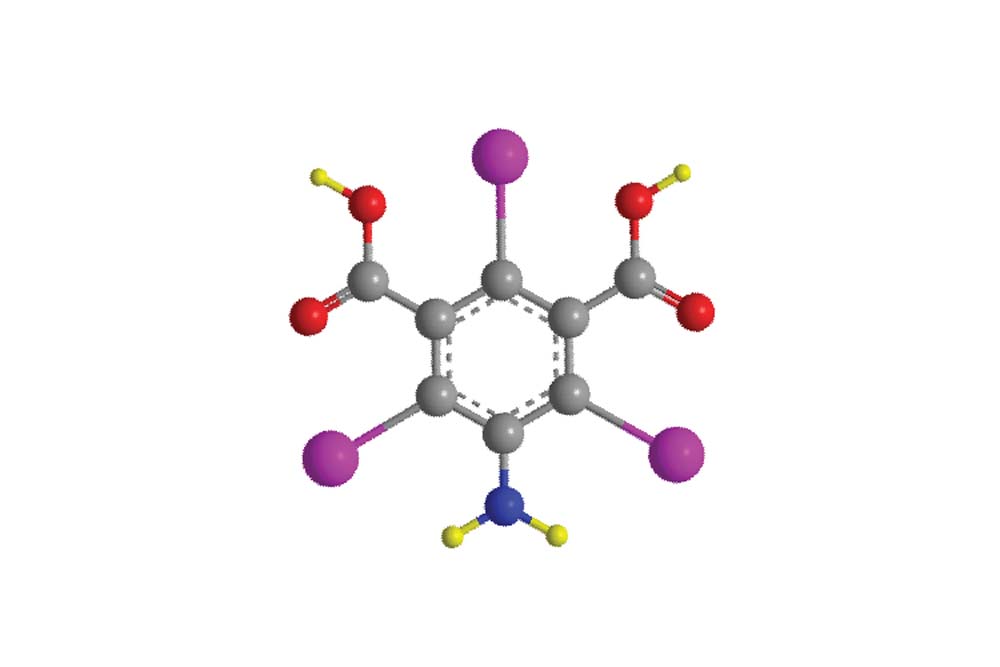Hampton Research蛋白结晶试剂盒






Products > Optimization Screens > I3C Phasing Kit > I3C Phasing Kit
I3C Phasing Kit
Applications
- Produce heavy atom derivative of biological macromolecules for phasing
Features
- I3C kit for soaking or co-crystallization
Description
I3C can be used for heavy atom derivatization of biological macromolecules for subsequent single wavelength anomalous dispersion (SAD) or single isomorphous replacement plus anomalous scattering (SIRAS).
The two carboxylic acid groups and one amino group of I3C can interact by way of hydrogen bonds with both the backbone and side chains of proteins. This can result in a relatively high occupancy of the bound ligand I3C. The three iodine atoms per I3C molecule provide for a strong anomalous signal.
With three iodine atoms per molecule it provides a strong anomalous signal, even for in-house X-ray sources, as the anomalous scattering signal f′ of iodine is 6.85 electron units at the Cu κα wavelength of 1.54 Angstrom.
The three iodine atoms in I3C form an equilateral triangle with 6.0 Å side lengths. These triangular structures can readily be identified in the anomalous electron density map.
Kit Contents
• 12 aliquots of I3C (280 mg each)
– Synonym: 5-Amino-2,4,6-triiodoisophthalic acid
– CAS Number [35453-19-1]
• 12 aliquots of 2.0 M Lithium hydroxide (650 µl each)
– CAS Number [1310-65-2]
• User Guide

Click to Zoom In
CAT NO
HR3-133
NAME
DESCRIPTION
24 Tubes
PRICE
$213.00
cart quote
Support Material(s)
 HR3-133 I3C Phasing Kit User Guide
HR3-133 I3C Phasing Kit User Guide HR3-133 I3C Phasing Kit SDS
HR3-133 I3C Phasing Kit SDS References
1. A magic triangle for experimental phasing of macromolecules. Beck et al. Acta Cryst. D64, 1179, 2008.
2. Structure determination of the cancer-associated Mycoplasma hyorhinis protein Mhp37. Sippel et al. Acta Cryst. D64, 1172, 2008.
3. 5-Amino-2,4,6 triiodo-isophthalic acid monohydrate. Beck et al. Acta Cryst. E64:1286, 2008.


Hampton Research, first in crystallization since 1991, developing and delivering crystallization and optimization screens, reagents, plates, and other tools for the crystallization of biological macromolecules, including proteins (antibody), peptides (insulin), and nucleic acids (DNA).
- Products
- Gallery
- My Account
|
|
|
- Contact Us
- Quick Order
- Support
|
- Privacy Policy
- Terms and Conditions
|
- Products
- Gallery
- My Account
- Support
- Contact Us
- Quick Order
- Privacy Policy
- Terms and Conditions
|
|
|
|
|
|
|
© 2022 HAMPTON RESEARCH CORP.
| Website by Skyhound Internet






